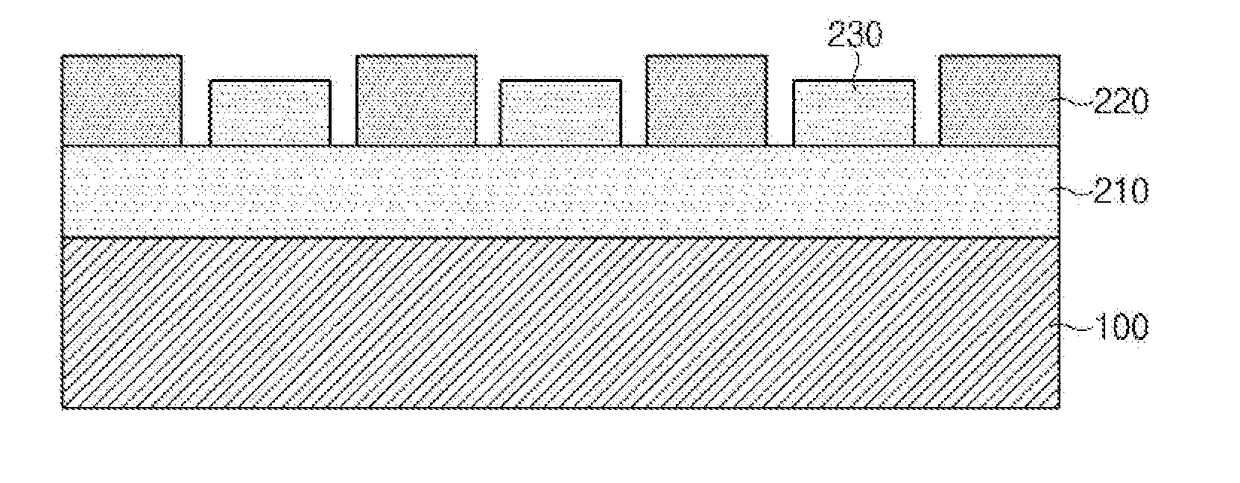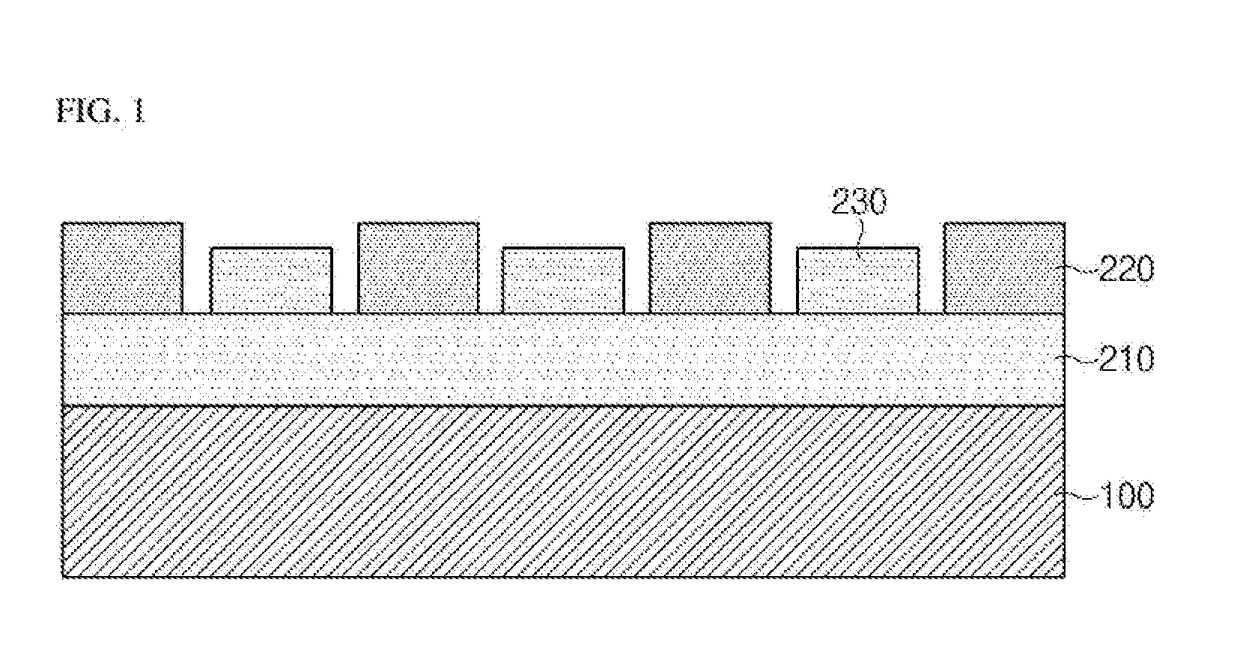Positive electrode and secondary battery including the same
a secondary battery and positive electrode technology, applied in the direction of positive electrodes, active material electrodes, cell components, etc., can solve the problems of reducing so as to achieve the effect of ensuring the improvement of the charging and discharging characteristics of the battery, and reducing the thickness of the electrod
- Summary
- Abstract
- Description
- Claims
- Application Information
AI Technical Summary
Benefits of technology
Problems solved by technology
Method used
Image
Examples
example 2
re of Battery
[0069](1) Manufacture of Positive Electrode and Battery
[0070]A positive electrode and a battery were manufactured in the same manner as in Example 1 except that LiNi0.85Co0.1Al0.05O2 having an average particle size (D50) of 13 μm as a first active material particle, LiCoO2 having an average particle size (D50) of 14 μm as a first pattern active material particle, and LiCoO2 having an average particle size (D50) of 14 μm as a second pattern active material particle were used. In this case, a first active material layer had a thickness of 50 μm. Also, a first pattern had a thickness of 35 μm and a porosity of 29%, and a second pattern had a thickness of 25 μm and a porosity of 24%.
example 3
re of Battery
[0071](1) Manufacture of Positive Electrode and Battery
[0072]A positive electrode and a battery were manufactured in the same manner as in Example 1 except that LiCoO2 having an average particle size (D50) of 15 μm as a first active material particle, LiNi0.6Co0.2Mn0.2O2 having an average particle size (D50) of 14 μm as a first pattern active material particle, and LiFePO4 having an average particle size (D50) of 5 μm as a second pattern active material particle were used. In this case, a first active material layer had a thickness of 70 μm. Also, a first pattern had a thickness of 24 μm and a porosity of 29%, and a second pattern had a thickness of 16 μm and a porosity of 24%.
experimental example 1
xpansion Rate of First Pattern and Second Pattern, Thickness Change Rate of Electrode, and Cycle Characteristics
[0079]The batteries according to Examples 1 to 3 and Comparative Examples 1 to 3 were charged and discharged, and then the volume expansion rate, discharge capacity, initial efficiency, capacity retention rate, and thickness change rate of an electrode were evaluated. The results thereof are shown in Table 1.
[0080]Meanwhile, charging and discharging were performed at 0.1C in 1st and 2nd cycles and at 0.5C in 3rd to 49th cycles. A 50th cycle was completed when a charged state (a state in which lithium ions were intercalated into a negative electrode) was reached, and a capacity retention rate was evaluated.
[0081]Charging condition: Constant current (CC) / constant voltage (CV) (0.02C current cut-off / 4.4 V (Example 1 and Comparative Example 1), 4.25 V (Example 2 and Comparative Example 2), and 4.30 V (Example 3 and Comparative Example 3)
[0082]Discharging condition: Constant cu...
PUM
| Property | Measurement | Unit |
|---|---|---|
| porosity | aaaaa | aaaaa |
| porosity | aaaaa | aaaaa |
| weight ratio | aaaaa | aaaaa |
Abstract
Description
Claims
Application Information
 Login to View More
Login to View More - R&D
- Intellectual Property
- Life Sciences
- Materials
- Tech Scout
- Unparalleled Data Quality
- Higher Quality Content
- 60% Fewer Hallucinations
Browse by: Latest US Patents, China's latest patents, Technical Efficacy Thesaurus, Application Domain, Technology Topic, Popular Technical Reports.
© 2025 PatSnap. All rights reserved.Legal|Privacy policy|Modern Slavery Act Transparency Statement|Sitemap|About US| Contact US: help@patsnap.com


